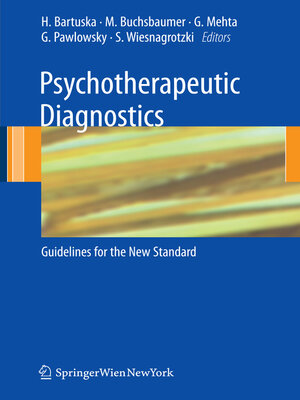
Sign up to save your library
With an OverDrive account, you can save your favorite libraries for at-a-glance information about availability. Find out more about OverDrive accounts.
Find this title in Libby, the library reading app by OverDrive.



Search for a digital library with this title
Title found at these libraries:
| Library Name | Distance |
|---|---|
| Loading... |
into account in particular respect of an intercultural and increasingly g- balized world. For what is experienced as painful, deviant, or troublesome is not only subject to individual perception but also to collective states of - consciousness. The diagnostic process may be understood as a form of translation in so far as a patient's utterances, be they verbal or nonverbal, are transferred to a new code of understanding, a process every communicator is involved in because, as we all know, there is no such thing as non-communication. If in an empathic relational ? eld we manage to decode a patient's subjective l- guage including that of her symptoms and distress, a new language will crop up which will ? nally explain the text the patient originally came up with. D- ferent visions entail different actions. At best, translating widens the scope of options of the affected individual and, precedingly, her scope of decisi- making. Just as translating from other languages is judged successful only if the hermeneutic depth dimension of a notion has been embraced and c- veyed, the psychotherapeutic process calls for the same prudence: only if we have grasped most of the meaning and the content may we adequately int- pret psychological occurrences and bestow meaning to them.







